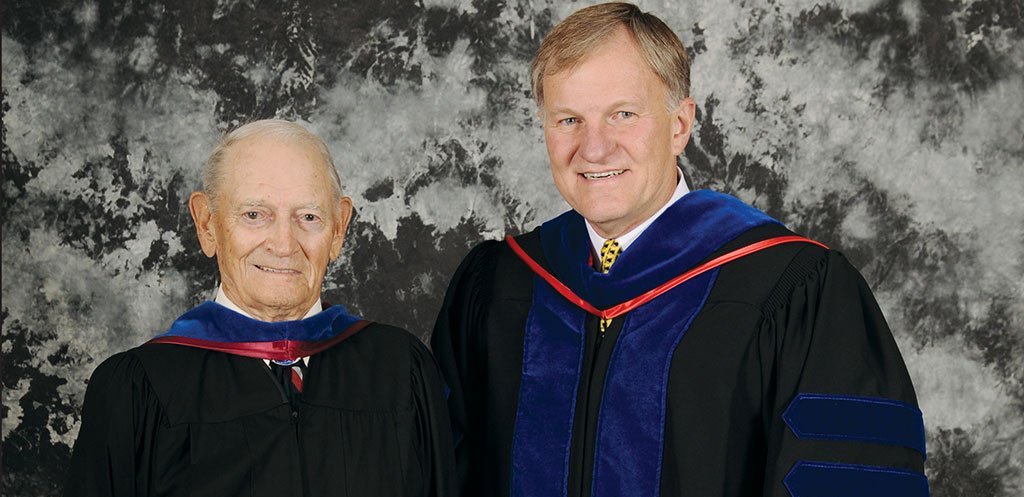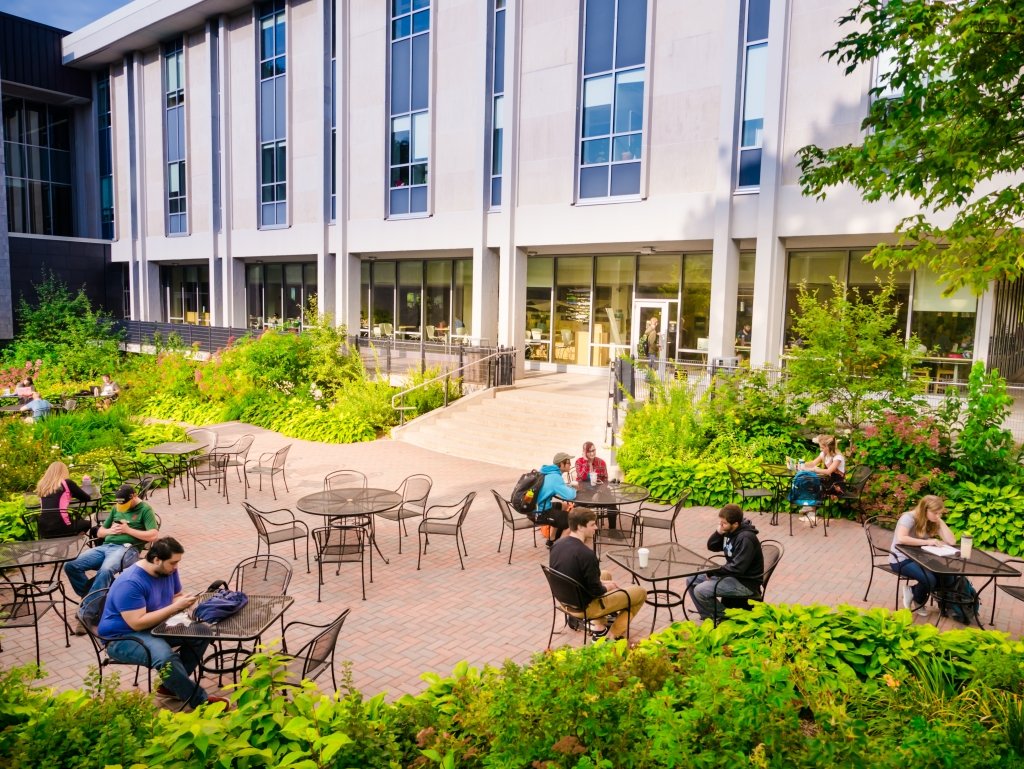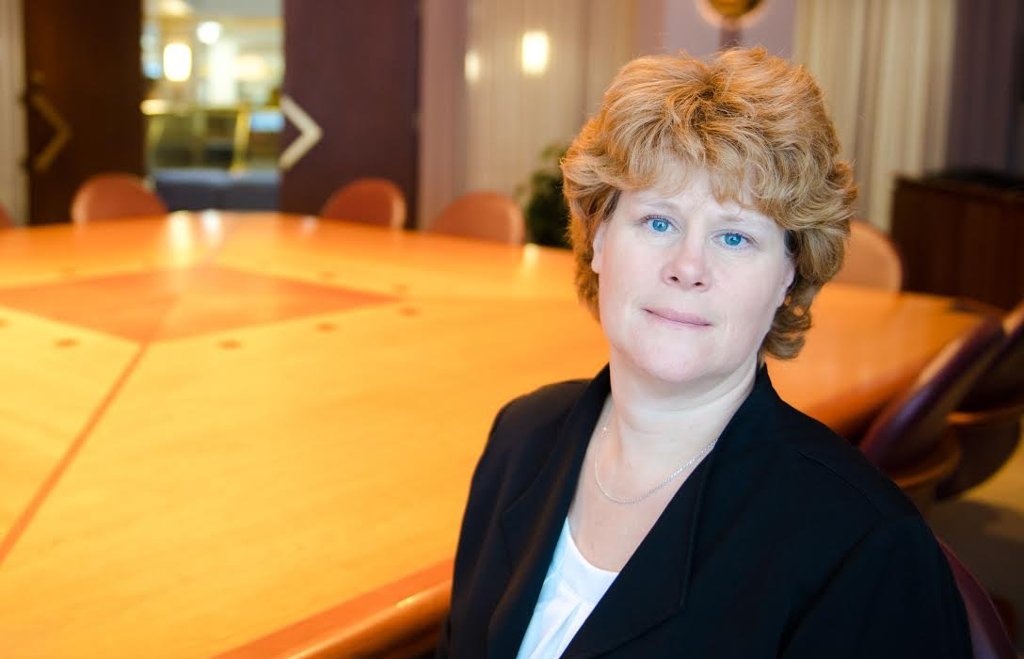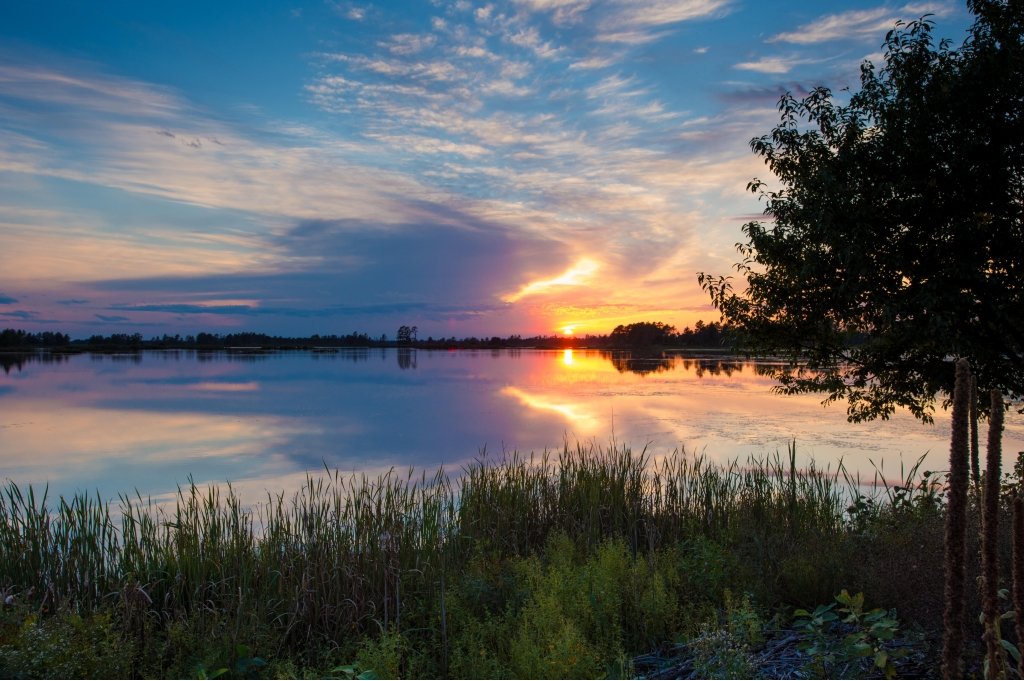Tech’s growth under Ray Smith cannot be overstated. Soon to celebrate a century, this visionary created a Husky-strong foundation that still guides us today.
Former Michigan Tech President Raymond L. Smith turns 100 years old in January. His influence reshaped the University and its direction for generations to come.
The Maine native received his bachelor's degree from the University of Alaska, where he would return to teach for three years following his Army service during World War II. He planned to earn his doctorate at Harvard, but instead followed legendary professor Robert Brick when he left Cambridge for Philadelphia. Smith earned his PhD in metallurgical engineering in "record time" from the University of Pennsylvania.
He stayed in the City of Brotherly Love after graduation, working at the Franklin Institute of Research. He was the head of Solid State Physics and a technical director of the Institute of Research before he came to Michigan Tech in 1959.
"The reason I went up there was because of Marty Caserio," Smith says from his home in Arizona. "He was a major figure at Michigan Tech and headed up Chevrolet."
The late Martin Caserio, a Laurium native, Michigan Tech alumnus, and General Motors Group vice president, served on what was then known as Michigan Tech's Board of Control in the 1980s.
Smith became chairman of the Michigan Tech Department of Metallurgical Engineering, which quickly rose to national prominence under his leadership. After six years at Tech, he became the University's sixth president.
One of his major contributions was the creation of the culture of philanthropy. "When I came here I was told 'You can't talk about money. You can talk about hockey, but we don't raise money here,'" Smith says. That changed. Working with Caserio, Smith established a foundation to benefit the University. "We were only taking in about $30,000 a year (in contributions) when I got here. It didn't take long to make it millions," Smith says.
Michigan Tech's astounding growth under Smith was noted in a May 1978 article in Houghton's Daily Mining Gazette. After just 12 years on the job, Smith had signed 10,133 diplomas. That number just so happens to equal the number of graduates dating from the University's founding in 1885 to when Smith assumed the presidency in 1964.
"Ray's signature was on both my BS and MS from Michigan Tech," says current Michigan Tech President Glenn Mroz, who in 2004 became the ninth president in Michigan Tech history. "But as a student, like most students, I only had the chance to meet him at the welcome and commencement."
"My friendship with Glenn is very important to me. He's done a wonderful job and he keeps in touch."Ray Smith
Before he was officially appointed president, Mroz reached out to former University leaders. He called Smith in Arizona to introduce himself, keeping in mind that another former president, Dale Stein, also lived there.
"I said I was the interim president," Mroz remembers. "He said 'I heard.' Long pause. I said 'well, uh . . . my wife Gail and I would like to come out and meet you, maybe go to dinner. We're hoping to see the Steins as well.'"
After another pause, Smith told him to come to his place for dinner—and said he'd invite the Steins. "Whew! Success," Mroz recalls. Following dinner and the "break the ice small talk" Smith looked at Mroz and with "gravity in his voice" asked, "So Glenn, what the hell are you going to do for Michigan Tech?"Mroz says there was yet another long pause, "I thought, 'nobody is going to rescue me.' I wasn't at the kids table for this dinner. It was clear that just as there is no such thing as a former Marine, there are no former presidents of Michigan Tech."
A spirited conversation ensued about plans, direction, strategy, enrollment, education trends, and more. It's a conversation that has continued through the years, developing into a relationship that is special to both men.
"My friendship with Glenn is very important to me. He's done a wonderful job and he keeps in touch," Smith says.
Tech's Assistant Vice President for Advancement Eric Halonen has been meeting with Smith at least once a year since 1999. "He still has the small projector that he used in the 1960s to 'sell' the Lansing legislators and local community on his long-term campus plan," Halonen says, adding that Smith also kept the printed plan from back then.
"He's gone over it with me with great enthusiasm a couple of times over the years. It's amazing how close we've followed it over the succeeding decades."
Halonen says the value of connections Smith made during his time at Tech endures. "Ray continues to have a strong network of Copper Country friends and former employees. In recent years, several members of his campus leadership team from the '60s and '70s have made major gifts to the University."
"Their experience working under Ray at a time of rapid University expansion and accomplishments was no small part of their motivation to make a gift. It was an exciting time in the University history and they were proud to be a part of it."
Halonen notes that Smith himself is a major donor and member of the Second Century Society. During the "Generations of Discovery" capital campaign, he endowed the Raymond L. Smith Award in the Department of Athletics. The award is presented annually to the outstanding male and female senior athlete of the year.
During his tenure, enrollment grew from 3,400 students in 1965 to nearly 8,000 in 1979-80. Faculty numbers nearly doubled during that period as well.
"Toward what Michigan Tech is today and what it needs to be in 2035 and 2045, to be a place of consequence."Glenn Mroz
The physical growth of the University is as impressive as enrollment numbers. Buildings constructed or acquired during Smith's tenure include the Administration Building, Electrical Energy Resources Center (EERC), U. J. Noblet Forestry Building, Chemical Sciences and Engineering Building, Student Development Complex, McNair Residence Halls—East and West, Gates Tennis Center, Upper Daniell Heights Apartments, and most famously, the R. L. Smith Building (MEEM) in his honor.
Mroz says he didn't recognize it at first what later became clear to him: Smith came to Michigan Tech to change Michigan Tech.
"Not willy nilly change, but change, as (author) Jim Collins suggests, what needs to change, never change what shouldn't change, and it's the president's job to know the difference. As a top-shelf researcher, Ray saw the role of research and development in a technological university as the logical marriage with a hands-on, mind-on education."
Mroz credits Smith as beginning the process of moving Tech toward its role as a research university, increasing the level and stature of programs, and accelerating the pace of change.
"Toward what Michigan Tech is today and what it needs to be in 2035 and 2045, to be a place of consequence," Mroz says.
Michigan Technological University is a public research university founded in 1885 in Houghton, Michigan, and is home to more than 7,000 students from 55 countries around the world. Consistently ranked among the best universities in the country for return on investment, Michigan’s flagship technological university offers more than 120 undergraduate and graduate degree programs in science and technology, engineering, computing, forestry, business and economics, health professions, humanities, mathematics, social sciences, and the arts. The rural campus is situated just miles from Lake Superior in Michigan's Upper Peninsula, offering year-round opportunities for outdoor adventure.







